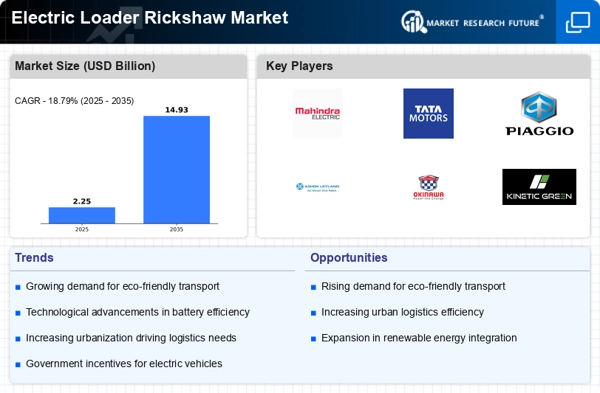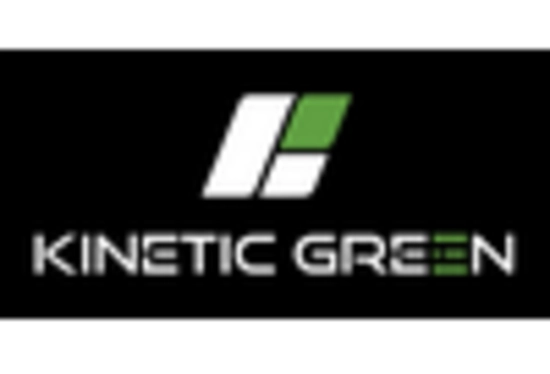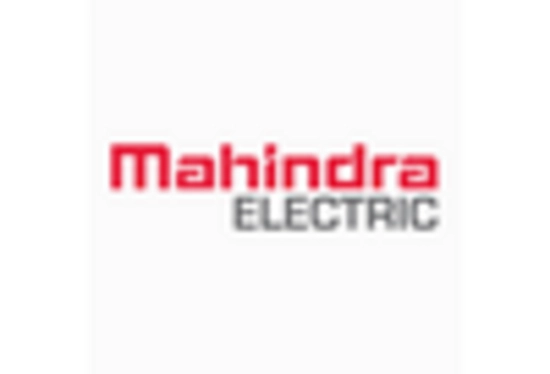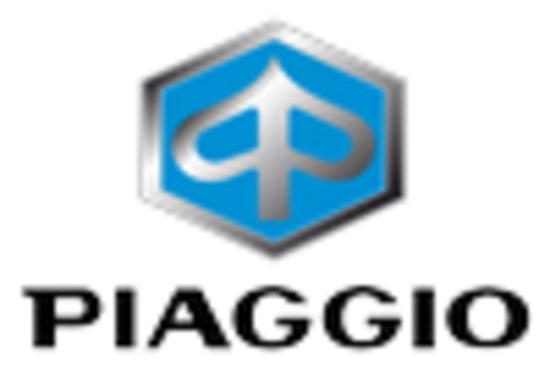Government Initiatives and Subsidies
Government initiatives play a crucial role in the Electric Loader Rickshaw Market, as various countries implement policies to promote electric vehicle adoption. Subsidies and financial incentives for electric rickshaw manufacturers and buyers are becoming increasingly common. These measures not only lower the initial purchase cost but also enhance the overall appeal of electric rickshaws. For example, certain regions have introduced tax rebates and grants for electric vehicle purchases, which can reduce costs by up to 30%. Such initiatives are expected to stimulate market growth, as they make electric rickshaws more accessible to a broader audience. The proactive stance of governments in supporting electric mobility is likely to foster a conducive environment for the Electric Loader Rickshaw Market.
Cost-Effectiveness and Operational Savings
Cost-effectiveness is a pivotal driver in the Electric Loader Rickshaw Market, as operators increasingly recognize the long-term savings associated with electric vehicles. Electric rickshaws typically incur lower operational costs compared to their gasoline counterparts, primarily due to reduced fuel expenses and lower maintenance requirements. The average cost of electricity for charging is significantly less than that of petrol or diesel, which can lead to substantial savings over time. Additionally, electric rickshaws often benefit from lower taxation and insurance costs, further enhancing their economic viability. As more operators become aware of these financial advantages, the Electric Loader Rickshaw Market is likely to experience a surge in adoption, driven by the promise of enhanced profitability.
Rising Demand for Eco-Friendly Transportation
The Electric Loader Rickshaw Market is experiencing a notable increase in demand for eco-friendly transportation solutions. As urban areas grapple with pollution and traffic congestion, electric rickshaws present a viable alternative to traditional fossil fuel-powered vehicles. The shift towards sustainable transport is driven by both consumer preferences and regulatory frameworks aimed at reducing carbon emissions. In many regions, governments are incentivizing the adoption of electric vehicles, which further propels the market. For instance, the electric rickshaw segment is projected to grow at a compound annual growth rate of approximately 15% over the next five years, indicating a robust market trajectory. This growing inclination towards environmentally friendly options is likely to shape the Electric Loader Rickshaw Market significantly.
Urbanization and Last-Mile Connectivity Needs
The rapid pace of urbanization is reshaping transportation dynamics, particularly in densely populated areas. The Electric Loader Rickshaw Market is poised to benefit from the increasing need for last-mile connectivity solutions. As cities expand, the demand for efficient and cost-effective transportation options rises. Electric rickshaws are well-suited for navigating congested urban environments, providing a flexible and agile mode of transport. This trend is further supported by the growing population in urban centers, which is expected to reach 68% by 2050. Consequently, the Electric Loader Rickshaw Market is likely to see heightened demand as these vehicles fulfill the essential role of bridging the gap between public transport hubs and final destinations.
Technological Innovations in Electric Vehicles
Technological advancements are a driving force in the Electric Loader Rickshaw Market, as innovations in battery technology and electric drivetrains enhance vehicle performance and efficiency. The introduction of lithium-ion batteries has significantly improved the range and charging times of electric rickshaws, making them more practical for daily use. Furthermore, advancements in smart technologies, such as GPS tracking and telematics, are being integrated into electric rickshaws, providing operators with valuable data for optimizing routes and reducing operational costs. The market is witnessing a shift towards more sophisticated electric rickshaws that offer enhanced features, which could potentially increase their adoption rates. As technology continues to evolve, the Electric Loader Rickshaw Market is likely to benefit from these improvements.

















Leave a Comment